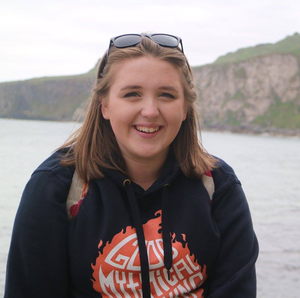Santana: Smooth
Resource summary
Page 1
About the Piece:
Key: A minor Time signature: 4/4 Genre: Merengue/Cha Cha rhythms Smooth is one of the biggest hit dance records of all time. It remains one of the biggest hits of all time today, spending 30 weeks in the top ten of The Billboard Hot 100, 12 of those at number 1, and only surpassed by Mark Ronson and Bruno Mars’ Uptown Funk (31 weeks) in 2015. The song can be described as a bossa nova with cha-cha elements. It is a fusion of styles and genres with ‘signature’ elements in the horn playing and percussion parts. The song follows a simple structure (shown below) which was very popular at the time of composition. The lead singer that was invited to collaborate for Smooth was Rob Thomas from Matchbox 20, an American alternative rock band. Instrumentation for Smooth featured lead guitar, bass, drums, percussion, congas, keyboards, trombones and trumpets. In Smooth, the horn section contains two trumpets and two trombones to provide instrumental colour and usually plays either countermelodies or close harmonies in a variety of textures, homophonic, contrapuntal, unison or octaves. The trumpet part appears to be in B minor rather than A minor on the original score (it is modified here). This is because the trumpet is a B♭ transposing instrument, which affects how the music needs to be written on the score.
Page 2
Introduction:
Like Love of my Life, Smooth starts with a brief one bar drum fill before the exciting three part contrapuntal texture in the key of A minor bursts in between guitar, bass and the horn section over a strong bossa nova rhythm. The bass provides a syncopated riff, and the main melodic theme by the guitar and counter-melody the horns provide a strong sense of syncopation. The guitar and brass instruments play against each other in the introduction, creating an antiphonal texture. The lead guitar plays with minimal vibrato in the introduction, particularly with the long notes in bars 8 and 9. The part of the trumpet and trombone is very typical of this type of music, with the trumpets and trombones playing in octaves in the first three bars of the phrase and moving into harmony in the fourth bar. An element crucial to the ‘Latin’ sound of Smooth is the use of additional percussion instruments such as congas, timbales, guiro and cowbell.
Page 3
Verses:
After the loud introduction, the dynamic drops to reveal another typically Latin, syncopated piano groove in the verse. The bass riff and drum rhythm continue to provide driving syncopation. The accompaniment in the verse (shown below) is typical of African/Cuban dance music. It is mostly based on three chords, Am (I), F (VI) and E (V). The vocal melody is rhythmically quite loose and free. It is quite restricted in pitch during the first twelve bars, encompassing a range of just a fifth between the tonic (A) and dominant (E). Like many of the songs on Supernatural, Santana punctuates the vocal melody with frequent short bursts of improvised responses by the horns, particularly at the ends of phrases. The first part of the verse is accompanied by only the percussion section, but in the second part, the horn section enter playing a simple syncopated counter-melody, playing in octaves. Immediately after the verse there is a pre-chorus or bridge leading to the chorus. The bridge is based on the same chord sequence as the verse. For the first time we hear an additional keyboard, a Hammond Organ. This fills out the texture with typically inverted chords. The bridge builds steadily in dynamic until the chorus.
Page 4
Chorus:
The rhythm of the melody in the chorus is much more regular than in the verse and bridge, with less syncopation and mostly continuous quaver movement. The rhythm stops in the last two bars of the chorus, with short ‘stabs’ on ‘Gimme’, ‘make’ and ‘real’, adding emphasis to the lyrics. Another interesting feature of typical use of the horn section appears in the chorus. The trumpet players use lip trills on the long notes in the second and 6th bars of the phrase. Classical trumpeters generally use the valves to play trills but it is very common in rock, jazz, soul and Latin music for trumpeters to use lip trills instead. After the chorus there is a return to the introduction followed by another verse and the second chorus. In the second chorus, there are additional improvised guitar responses from Santana. At the end of the second chorus there is an additional bar with a rising chromatic horn phrase leading into the guitar solo. The guitar solo consists of extended guitar improvisation over the basic chord structure of the verse. In this solo, Santana employs all his tricks and techniques to the full: increasing use of linear vibrato on long notes, frequent pitch bends and rapid tremolo. The final chorus is followed by another lengthy guitar improvisation this time accompanied by vocal responses and drum kit/percussion fills, as the music fades to its conclusion.
Want to create your own Notes for free with GoConqr? Learn more.

